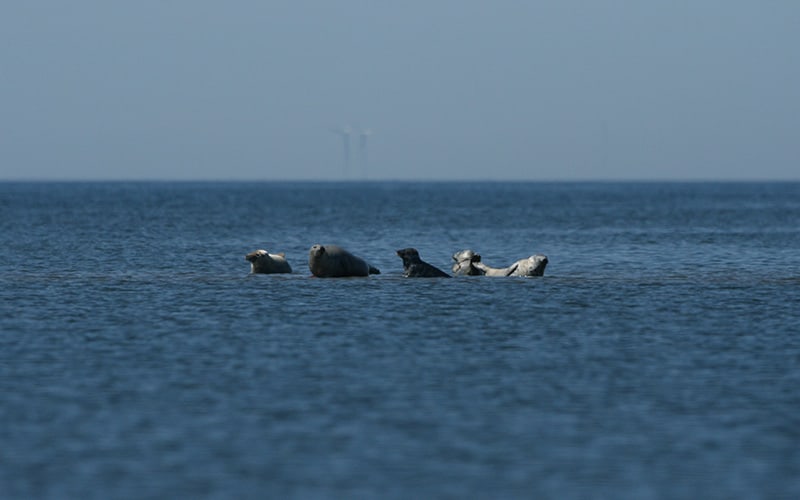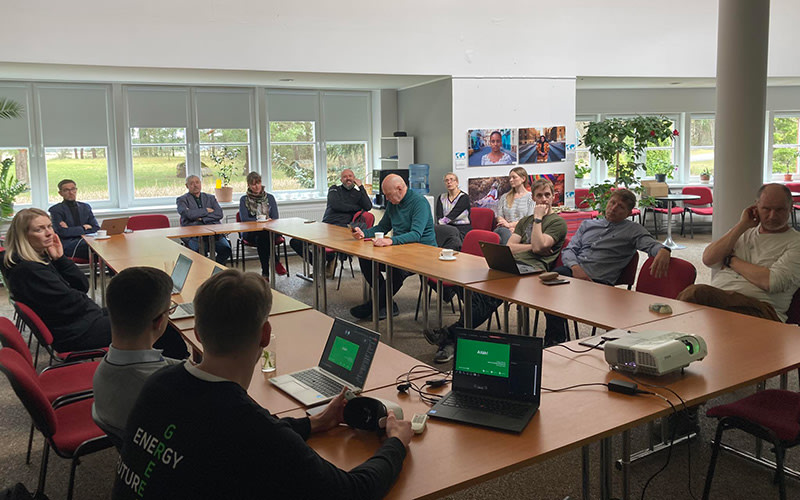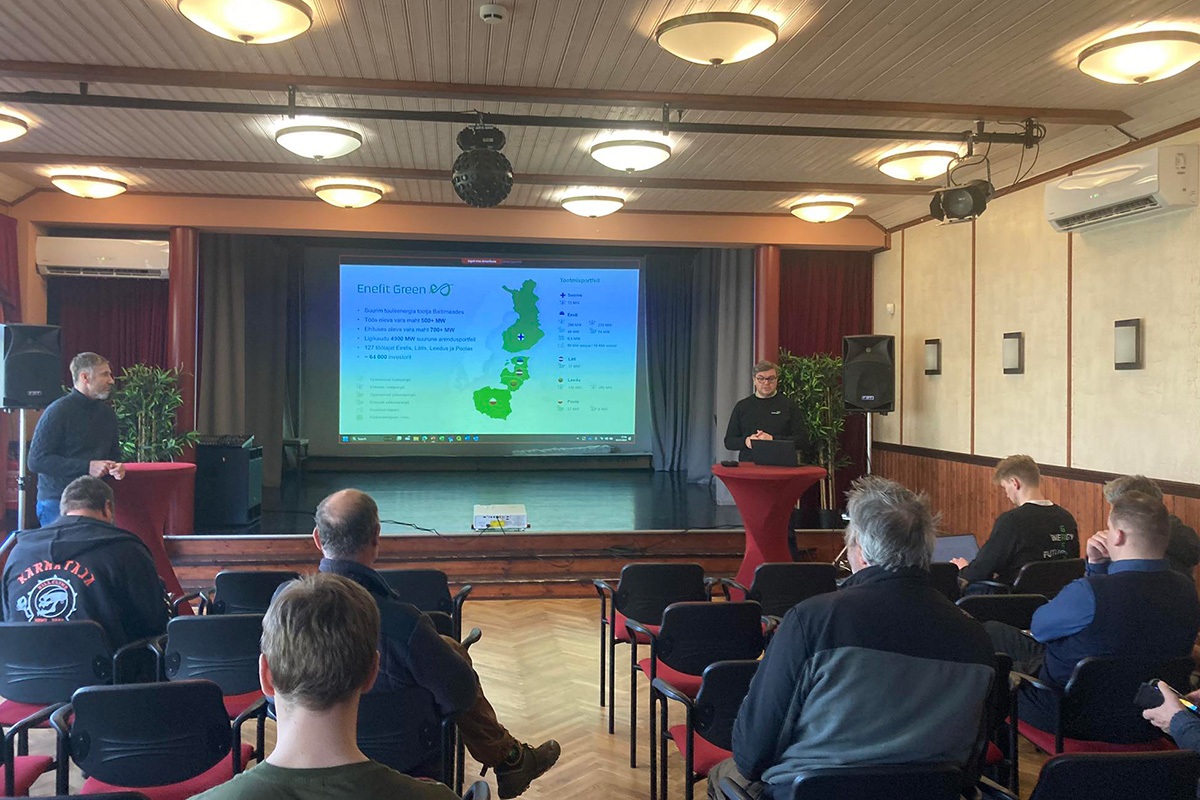The environmental impacts of the Liivi offshore wind farm revealed

Enefit Green organised the Liivi offshore wind farm environmental study information days in Kihnu and Häädemeeste, where scientists from various fields presented the environmental impacts of the wind farm.
On 17 and 18 April, local residents gathered at the community centres in Kihnu and Häädemeeste to learn about the impacts of the sea wind farm on bats, seals, benthos, fish fauna, and whether the wind farm is accompanied by noise.
‘Scientists have carried out thorough environmental studies, providing valuable insights for us, the developers, and for the locals, who understandably have many questions about the impacts of the offshore wind farm. It is crucial for us to know that the offshore wind farm will not have a significant negative environmental impact. Moreover, we can already prevent even the smallest impacts during the planning stage of the wind farm, ensuring that the environment remains protected and the community is satisfied,’ explains Karmo Kõrvek , the Development Manager of Offshore Wind Power at Enefit Green.

Information day in Kihnu
To date, most of the 23 studies have already been completed, while a few are still in their final stages. ‘In summary, it is possible to construct the Liivi offshore wind farm by implementing certain mitigation measures,’ notes Jüri Hion , the environmental expert at the environmental studies company Skepast & Puhkim. The studies also revealed that two shipwrecks of heritage protection significance have been discovered in the Gulf of Riga, and wind turbines must be planned within their 300-metre protection zones. To protect the well-being of seals, mitigation measures must be taken during the construction of the wind farm to avoid or reduce strong impulse noise that may accompany the laying of foundations. Regarding bats, it is necessary to limit the operation of turbines on windless nights during their crucial migration period from 1 August to 15 September.
‘We organised the information days with the aim of sharing the results of the studies with local governments and communities as early as possible, so that they are informed and can provide feedback necessary for the final report. The final environmental impact assessment report is scheduled for completion in autumn, and we will then conduct public consultations,’ states Kõrvek .
Enefit Green plans to build an offshore wind farm in the Gulf of Riga with a capacity of up to 1,000 megawatts, which would supply up to half of Estonia’s annual electricity consumption with environmentally friendly electricity. Depending on the wind turbine height and other technical parameters, the wind farm would consist of 50 to 84 turbines, capable of producing about four terawatt-hours of green electricity. The proposed location for the offshore wind farm is the Gulf of Riga, 11 km from Kihnu Island and 16 km from Häädemeeste. The expected construction period for the offshore wind farm is from 2028 to 2030.

Information day in Häädemeeste
Enefit Green is one of the leading renewable energy producers in the Baltic Sea region. The company operates wind farms in Estonia and Lithuania, solar parks in Estonia and Poland, a co-generation plant in Estonia that uses municipal waste as fuel, and a hydroelectric power plant in Estonia. In addition, the company develops several wind farms and solar parks in the above-mentioned countries, as well as in Latvia and Finland. The company’s operational assets have a capacity of over 500 megawatts, and the volume of assets under construction is more than 700 megawatts. Enefit Green is one of the leading renewable energy producers in the Baltic Sea region. The company operates wind farms in Estonia and Lithuania, solar parks in Estonia and Poland, a co-generation plant in Estonia that uses municipal waste as fuel, and a hydroelectric power plant in Estonia. In addition, the company develops several wind farms and solar parks in the above-mentioned countries, as well as in Latvia and Finland.